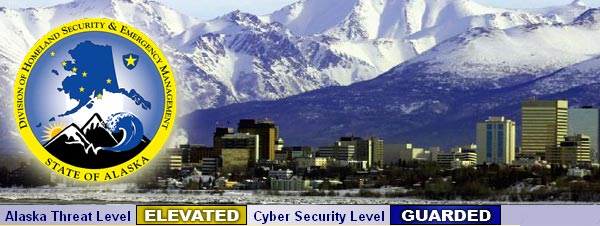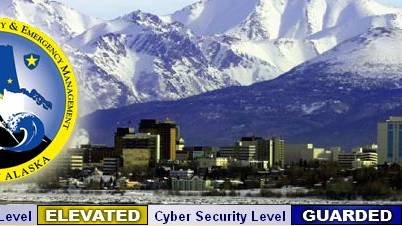Alaska tests nation's emergency alert system
Source: news.yahoo.com

Radio listeners and TV viewers in Alaska witnessed the first national emergency exercise of its kind Wednesday morning, but the test ran into distribution problems around the state.
Radio, television and some cable providers participated in a live statewide test of the nation's Emergency Alert System, which employed a never-used code that would be applied in a national crisis.
"A national emergency action notification has been issued for: District of Columbia, DC," ran a red message banner at the top of the television screen to stations not beset by several reported glitches.
Filling the rest of the screen was a scene of a snowy, wooded mountain, superimposed by a large red stop sign and the words, "Chill! It is just a drill."
The 10 a.m. Alaska Standard Time test will help officials prepare for a future national exercise not yet scheduled, according to state and federal officials.
"We will need some time to analyze the results, but we intend to move quickly to improve the system," Jamie Barnett, chief of the Federal Communications Commission's Public Safety and Homeland Security Bureau, said afterward in a statement.
The three-minute airing — activated from Washington, D.C., by the Federal Emergency Management Agency — was unlike regular periodic tests aired by broadcasters in communities or within state lines. It was the first official activation of the Emergency Action Notification code, to be activated nationwide only by the White House to give the president access to airwaves during a real crisis.
The alert system has been in place since the mid-1990s, replacing an older emergency communications system.
The president's notification code has never been activated for any crisis, said Damon Penn, FEMA's assistant administrator of National Continuity Programs. The code would be crucial in a widespread disaster, so even 9/11 didn't trigger it, he said.
"It was not deemed necessary to issue a nationwide alert," he said. "That disaster did not limit any communications."
Officials considered the test "absolutely successful," with a few anomalies found as expected, said Bryan Fisher, chief of operations at the Alaska Division of Homeland Security and Emergency Management. Some broadcasters did not receive the signal in time and others got a weak connection or only the audio portion of the exercise.
For example, statewide cable provider GCI — with 130,000 subscribers — didn't receive the initial launch signal, although it did get the disconnect signal, company spokesman David Morris said.
Participants will spend the next weeks, or even months, working through the problems, Fisher said. He said glitches could be blamed on various factors, such as old equipment or flaws with programming or audio levels.
Participant said the exercise has been in the planning since September. The Alaska Broadcasters Association developed public service announcements on the exercise that began airing Dec. 21, said the association's executive director, Darlene Simono.
Alaska was chosen for the initial test run for several reasons, Fisher said. Alaska is well-versed in similar exercises conducted through the national public warning system to test tsunami warnings and Amber Alerts within the largest state in the country.
Alaska's extreme isolation also cuts down on the chance of the test reaching beyond state lines and potentially causing confusion, Fisher said.
Article from: YahooNews.com
Video from: YouTube.com
Emergency Alert System (EAS)
By Mu Xuequan | ChinaView.cn
Alaska on Wednesday became the first state in the United States to host test of a national emergency alert system on its capabilities to allow the U.S. president to address the whole nation during a crisis, local media reported.
At about 10 a.m. local time, test alert lasting about three minutes was heard on the radio and seen on local and cable TV, the Anchorage Daily News said in a report on the newspaper's website.
The statewide exercise of the Emergency Alert System (EAS) was jointly conducted by federal and state agencies as well as the Alaska Broadcasters' Association.
The EAS is a national public warning system designed to enable the U.S. president to address the American public during a national emergency.
Regulated by the Federal Communications Commission, the EAS is administered by the Department of Homeland Security through the Federal Emergency Management Agency (FEMA).
According to other media reports, Wednesday's test in Alaska included the first official activation of the Emergency Action Notification, an event code used by the EAS to signify a federal activation of the system, which is technically reserved solely for the U.S. president.
In a statement released on Tuesday, the FEMA confirmed that Wednesday's exercise "will test the Presidential alert and warning capabilities over radio and television broadcast stations and cable television systems only."
"Periodically exercising our communications capabilities is an important step to ensure that we, as a country, are prepared for an emergency," said Craig Fugate, the administrator of the FEMA.
Alaska was chosen to be the first state to test the Emergency Action Notification because of its isolation and Alaskans' familiarity with tsunami tests, according to the Alaska Division of Homeland Security and Emergency Management.






















